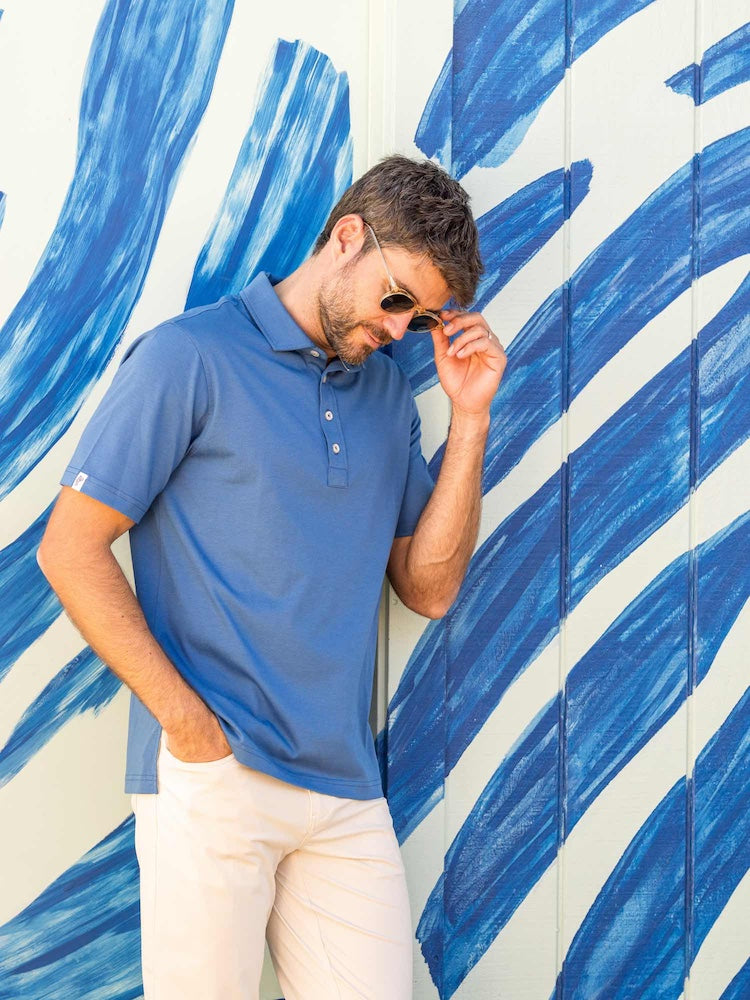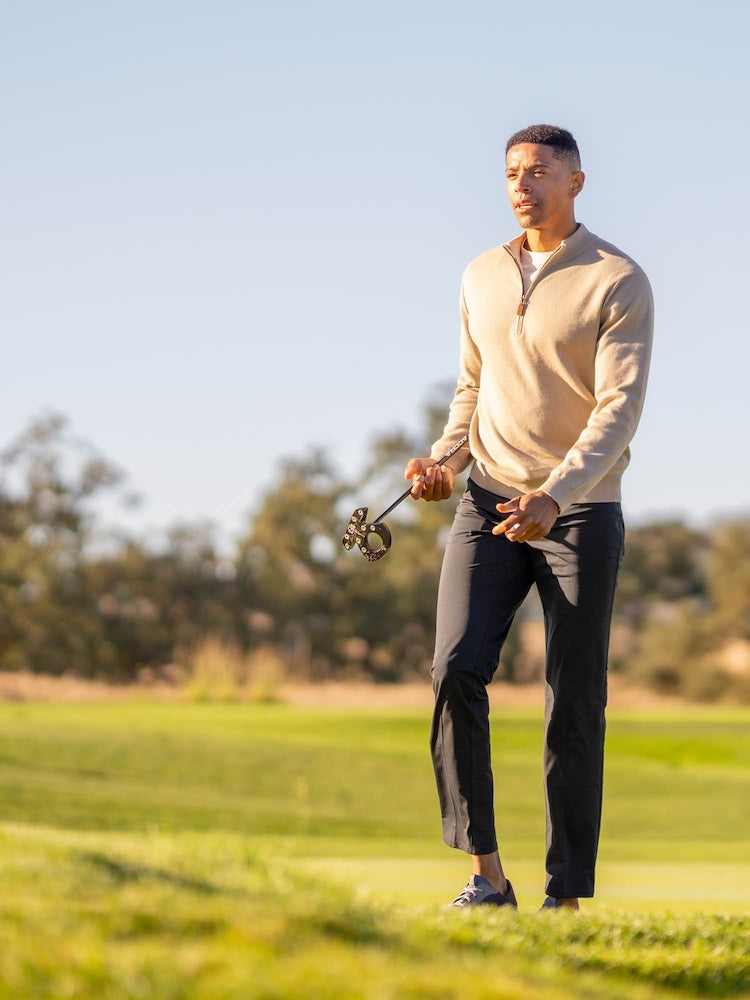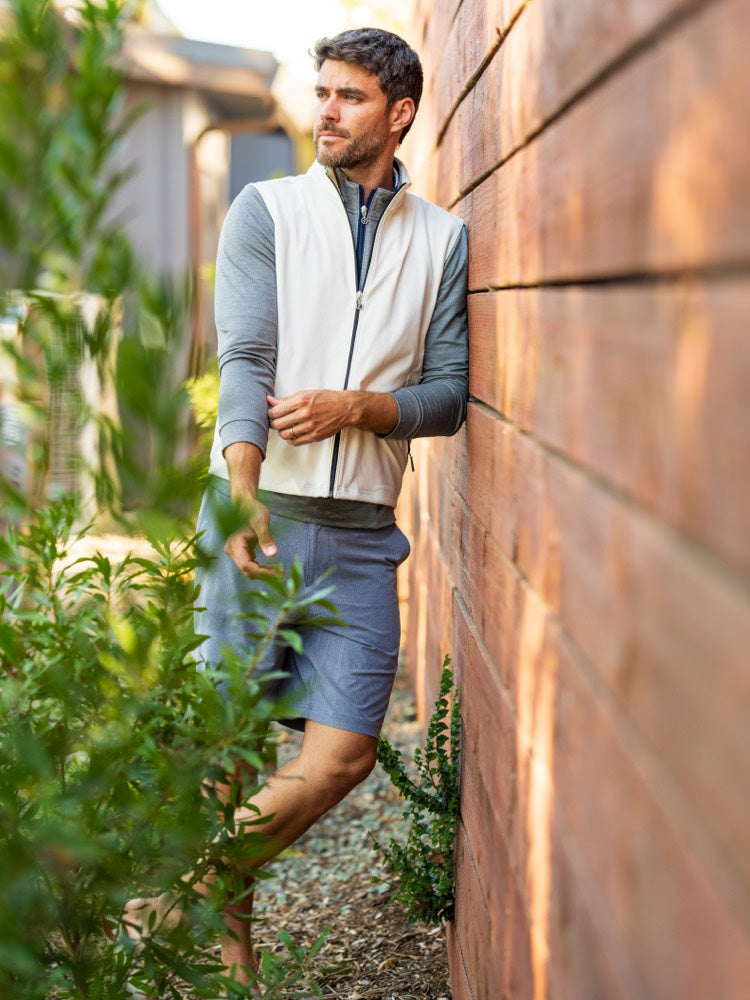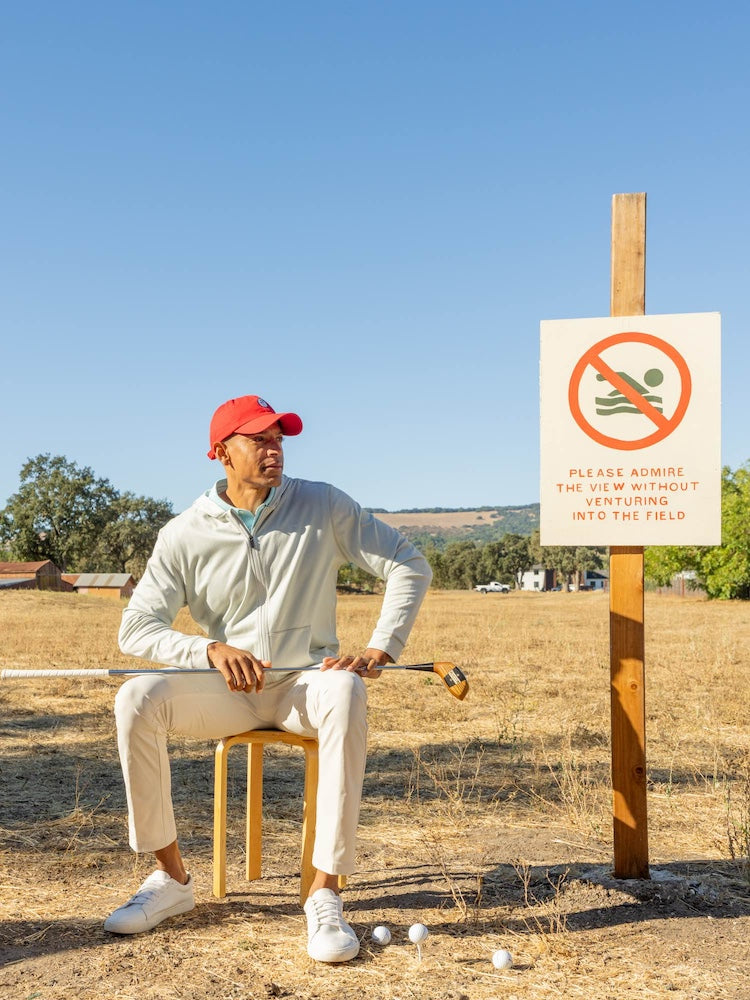
Interview with Richard Lipsey
Tom Hoge (pronounced hoagie) spent his first six months in Statesville, NC, and he's lived in Forth Worth, TX since his days at Texas Christian University. But in between diapers and college, Hoge lived in Fargo, North Dakota, and he says he will always consider himself a full-blooded North Dakotan. “North Dakota is in my blood,” says Hoge.
North Dakota, the frigid state in the Great Plains whose norther edge straddles the Canadian border for 310 miles, is definitely no golf mecca. There are three times as many 18-hole courses in Myrtle Beach (90) as there are in all of North Dakota, and Hoge is one of just three North Dakotans who've won a PGA Tour event. (The others are Mike Morley, 1977 Quad Cities Open; and Paul O'Leary, 1956 Imperial Open and 1957 Erie Open.) But North Dakota provided Hoge with all of the tools – a tireless work ethic, rich communal and familial bonds and a deep appreciation for every shot he gets to hit – that he's needed to forge a thriving PGA Tour career.
How does a kid in Fargo get into golf?
North Dakota is all that I knew growing up. Short summers and long, cold winters. I was fortunate because my parents were members at Fargo Country Club, and it has a great par 3 course. Starting when I was about three years-old, I began tagging along with my parents and older brother, Charlie, and we went around the par 3 so many times I can't remember. When I was 13, I got serious about golf and decided that I wanted to become a professional. During school, I'd do my homework on Friday nights so that I could play golf all weekend. In the summer, I would ride my bike to the club and play golf and hit balls all day. I remember one time in the fall, we had a day off from school and I told my parents that I was going to play 72 holes. I'm not sure they believed me. But by 11:30 am, I'd finished 36, and I easily got in all 72.
How do you stay sharp in the winter in North Dakota?
You don't. But even after I got serious about golf, I kept playing lots of other sports. In the winter, I played basketball on my high-school team. But Fargo has an indoor hitting facility, the Sports Bubble; it's one of those domes kept up by blowing air. But it was tough. Hitting balls in there is boring and monotonous. You can see shots go only 70 or 80 yards and you're always hitting on mats. You can work on specific techniques and the short game, but that's it. Still, it wasn't too big of a deal, because I was going to the Bubble only a couple of times a week. And looking back, the Bubble must be pretty good for golf, because it has produced two Tour players. (The LPGA's Amy Olson is the other.)
Would you ever consider changing your home state listing to Texas, considering you've lived there for almost 15 years?
No. The Tour has approached me a few times to change my listing in the media guide, because it's been a little confusing for some reporters when they see North Dakota. That's why the Tour decided to change my listing of Fargo from being called my “hometown” to the “city plays from.” I just feel such pride for having grown up in North Dakota. There's something different about everybody up there that I can relate to. Plus, so many players have come out of Texas, but not many have been from North Dakota. It's kind of cool being the only guy from North Dakota teeing it up on Tour.
Maybe most important, people from Fargo are the ones who had the key part in helping me reach the Tour. John Dahl was my first swing coach,back at the Sports Bubble, and Steve Kennedy was my high school coach at Fargo South-he's a legend up there.
Do you have other connections to North Dakota?
I've been very lucky. I have three sponsors from North Dakota. There's Scheels, the sports store, which got me started; Eide Bailly, an accounting firm; and Bell Bank. It's been great to have that local support.
How did you meet your wife Kelly?
Kelly grew up in Minnesota, and she was a competitive golfer too as a kid and later played at Montana State. We met playing junior tournaments in Minnesota. We got married in 2017, and Kelly travels with me almost every week.
Do you wish you'd grown up in a warmer climate?
When I was a kid, I definitely wanted to live in the south and playyear round. But I did travel to junior tournaments a decent amount during my teenage summers. I never did so well at the big events, because I always seemed to have a bad day, usually at the start of the tournaments. I just wasn't one of those hot-shot juniors who plays year-round and has it all. But living in North Dakota was a blessing, too, because I never got burned out, and that fresh passion for the game has helped me to get better every year, and hopefully I can keep that going. Wanting to play more is also what led me to go to college in Texas.
What motivated you to work so hard at TCU, where you were a double-major – finance and accounting – and had a 3.6 GPA?
I was lucky, because I had a few AP credits coming out of high school. But working with numbers has always been easy for me. And I've always been fascinated with money and how to get more of it. College was hard work, but I felt like two majors was doable. Because I wasn't a can't-miss kid as a golfer, I wanted a degree that meant something in case I needed to use it. For stuff that I get interested in, I can learn pretty easily. Not many people know this, but at TCU one-third of my scholarship was funded by the golf team and two-thirds was academic. That was pretty cool.
You play a lot of Tour events, averaging about 32 a year. Do you ever get burned out?
Sometimes, I'll stretch it out and play five or six weeks in a row. At times, it can feel like a struggle, with all of the travel, but Kelly and I don't have kids yet, and I'm very blessed to do what I do for a living. The way I see it, every week is a new opportunity, so I seem to always feel like I should get out and give it a go. Every week, somebody is going to win a million bucks, so it's tough going home when there's a tournament like that where I can play. Kelly and I really enjoy our life.
What do you remember about your professional debut?
It wasn't glamorous. I turned pro in 2011. I'd just graduated from TCU. I played an Adams tour event in Houston, made some money, and then went to Fargo where I was going to base myself while playing the Canadian tour. A friend had just moved to Saskatoon, and there was a tournament near him, so I drove from Fargo to Winnipeg to Monday qualify. I got into the tournament, but I didn't know where to stay. My friend told me about a hotel near the course that was cheap, maybe $60 a night, and that sounded good. He laughed when I said I'd stay there, and I should have gotten the joke. The first night when we checked in, the desk clerk smiled and said, “Sure you want to stay here?” I didn't think twice. A few hours later, I got the joke. My dad was caddieing for me and we were rooming. It was really hot and the AC had busted, but that wasn't the only thing that kept us up. We heard some loud music and learned that the hotel also had a strip club. But things worked out pretty well. By the third round, I was leading the tournament, so I decided to upgrade to another hotel. I ended up winning, and the victory got me into the Canadian Open (a PGA Tour event) the following week, so things worked out pretty well.
Does Kelly give you golf advice?
Sometimes, I had to Monday qualify in my early years on Tour, and Kelly caddied for me. One year, I was trying for the Honda Classic. I was in one of early groups. Coming to the tee at 18, a par 4, I was seven under. I drove it to the right into trees. For the second shot, I had 170 yards but it was over water to the green and I needed a big cut. Kelly wanted me to chip out, but I wasn't having it. I told her that I was going to cut a 6 iron around the trees and over the water. It was a 30-yard cut, water up near green. I told Kelly to walk out to the fairway and watch. I hit it well, but I couldn't see where it went because of the trees, When I got to the fairway, I asked Kelly, “Where did it go?”
“I don't know,” she said. “I closed my eyes.”
The ball landed on the green and I made par and got into the tournament. So Kelly had a promising start to her career as a caddie in qualifiers.
Nowadays, Kelly and I don't talk much about my golf.
How long have you been on the Ashworth staff?
This is my first year. We started off in Hawaii. It's cool to wear and represent Ashworth on Tour. A lot of guys ask about the company coming back after so many people wore Ashworth on Tour for so many years. The company is getting excited because they have a lot more products coming soon. It's such an iconic brand so it feels good to wear the logo.
What do you remember about winning your first Tour event, at Pebble Beach in February? (Hoge won by two shots over Jordan Spieth.)
The biggest thing is that I'd been in contention leading up to Pebble. I had tied for fourth at Hilton Head in November, and in January I was second at the American Express. So I felt real comfortable with what I was doing at Pebble on Sunday. My body felt good. I was in control. Still, you need the breaks to go your way to win. I think seven people were in or tied for the lead at at different times on Sunday. On 14, I curled in a 20-footer, and when I stepped up to the 17th tee I had the perfect yardage for a seven-iron. I hit it to about 20 feet and made the birdie putt.
Your Father told me that many years ago, you promised him that you'd take him to Augusta if you won a Tour event. Did you follow through?
Going to Augusta is the thing that I was most looking forward to after winning. I mean, the only way in is to win. I was lucky because we had a couple of months in between Pebble and the Masters, so I decided to take my Dad and brother. Fortunately, a member hosted us, and it was a real blessing that I got to share the experience of my first trip to Augusta with my family. It made everything really special. It's the one place in golf where you have such high expectations, and the place exceeds them. Driving down Magnolia Lane that first time was very special. We were all very excited.
Did you and Kelly shop in the Masters' Merchandise Tent during the tournament?
I did a little. I got a few shirts and hats. It's always cool to have that Augusta National logo when you go out. But Kelly did the most shopping.
What did she buy?
The better question is, what didn't she get? I still haven't paid too much attention to that bill.
You've earned about $12 million on the Tour, but you're a pretty conservative spender.
When I earned full status on the Tour, I was still driving the 2003 Toyota 4runner that I'd had in high school. But after I secured my card in 2018, I bought a couple of expensive cars. One was a BMW X5M, which is kind of like their race car package. It is pretty fast and fun to drive, but I figured out that expensive cars aren 't my thing. I still have the BMW, but it has only 14,000 miles, because we're hardly ever home.
Who manages your money?
I have managed all my own money for a number of years. I enjoy doing research. I do a lot of reading about the economy and specific companies; it's a good thing for down time in hotel rooms. Mostly, I keep things conservative, primarily index funds. I have some fun money on the side in individual stocks.
Where did you and Kelly go on your honeymoon?
We went to Jamaica. We had one of those bungalows over the water. So we had a good time.
Do you fly private or commercial?
Commercial, and we sit in coach. I book most of my own tickets. I like mapping our flights and hotels. It's kind of fun figuring out where we will be. I would have a hard time flying private. I wasn't the sure thing to make the Tour. I had to play three years on the Korn Ferry, and my first two seasons on the PGA Tour I finished in the 126-150 category and in my third year I was 166th. So I know what it's like to struggle and not know if you'll have a job next year. I have a good appreciation for how difficult it is to stay on Tour. My thought has always been to have enough money tucked away so that when I do end golf, I'm okay financially. I am trying to set up myself for the rest of my life.
What is the most clutch golf you ever played?
It was the 2017 Web.com (now Korn Ferry) tour championship. I'd finished 166th on the PGA Tour and lost my card, so I played the Web.com finals series hoping for one of the 25 cards available. In the last event, the Web.com tour championship, I needed a good finish. I'd played ok in the first three rounds (71-63-70), but I needed a big last day. During the week, I was getting my application ready for Q school in case I didn't play well. We were rained out on Sunday, so it was a Monday finish. The final round started fine but I wasn't making much happen. I knew that I needed birdies, and they started coming. I birdied six holes between 7 and 17, and coming to the 18th tee I knew that I needed one more birdie to get my Tour card, and I got it. I made a 15 footer, and I gave probably the first fist pump of my life. It's amazing how fast things can change: one minute I was going back to the minors, and the next minute I make a putt and I have a Tour card. I was well aware that to get full retirement benefits on the Tour you need five seasons with at least 15 starts. Going back to the Korn Ferry would have been the wrong direction, but I came through.
Do you tinker with your equipment?
I know about as little about equipment as anybody on the Tour. I've played same model of Titleist irons, a muscle back design, since I was 13 years-old. I have the new model of those irons, the 620 MBs. It goes back to how much familiarity I have with that set up. One thing that's been changing this year is the putter. Unfortunately, I've used four or five models this year. Sometimes, I just like to change the visuals. I like to line up the line that I put on the ball with a Sharpie with the line on putter. At Pebble Beach, I won using an Odyssey White Hot OG Two-Ball.
What's the oldest club in your bag?
I have a Titleist utility club, a 913 Hd hybrid with 18 degrees of loft. I hit it 240 yards. I got it in 2012. One week, I took it out of the bag. I missed some fairways with it four days in a row, and it's been back ever since.
Favorite movies?I've always loved Casddieshack, and I've watched Tn Cup a bunch of times. I guess I know the lines pretty well from those movies. I've also always liked the Austin Powers movies.
Your Father, Chuck, told me that since childhood you've taken great pride in dressing well on the course.
I always wanted to dress like the pros dressed. I wanted to see myself winning one day, and looking like a pro was a part of that. Once I won a a junior tournament and got a $300 merchandise credit at the pro shop. I really wanted a pair of FootJoy Classic shoes, but they cost $330. Thankfully, Dad covered the $30 difference, and I got the shoes.
Do you take golf vacations?
Pebble Beach is a place that Kelly and I have always loved. So last July, I took off a couple of weeks and took my Dad for his 65th birthday to Pebble. Kelly and my brother Charlie also came.
Who paid?
I paid for that one. This is kind of funny. I called up the reservation line to book the trip. I'd seen on the website that they had a special deal for a couple of nights – lodging and golf. The price the agent gave was kind of steep, so I asked if they have discounts for PGA Tour members. I was not too proud to ask, that's for sure. But the agent didn't offer anything. It cost $7,300 for two nights.
Was food included?
Oh, no. That was extra.
Do you take non-golf vacations?
The last few years, we've been going to Vail to ski. I didn't ski much growing up; maybe a few days a year on a hill in Alexandria, Minnesota. But when we first went to Vail we had a great instructor. His job was to keep me from getting hurt, and he did his job. Not sure if I'll go back. It might not be the smartest thing for a professional golfer.
How many hole in ones have you made?
Eight, I think. I had one on the Tour; it was in Reno in 2017, and I tied for fourth that year. Most of the others have been in Texas at places where I practice. I made a bunch as a kid at the Fargo Country Club par 3.
Did you ever hit a shank in competition?
Not in a Tour event. It's been a while since I shanked one. I remember I shanked one in the North Dakota State Amateur when I was in college. Knock on wood, it won't happen again.

I do, yes, I like doing all of the small stuff on my own. But I'm the least handy person on the Tour, so I always call somebody to fix things around our house.
What sort of life lessons did your parents teach you that have helped your golf career?
It might sound silly, but Mom and Dad had me playing every sport that I could as a kid. Baseball, basketball, you name it, I played it. Looking back, playing on all those teams taught me how to be coached, and that's really important in golf. You need a work ethic and the ability to know when and how to listen. I saw my Dad working hard at his job – he was a senior executive at Bobcat, a construction company – and Mom always took great care of the house. Mom and Dad just took pride in everything that they did, and that instilled a work ethic in me to do things the right way from a young age. I think they had the blue-collar work-ethic mentality that can be prevalent in the midwest.
What's your fitness training like?
I don't do too much during tournament weeks. I do most of my working out at home, where I see a trainer three or four days a week.
This year, you have increased your driving distance by eight yards (289 to 297). Where did that come from?
My work is more geared toward injury prevention and mobility than strength, to help with longevity. But I have been working with my coach, Scott Hamilton, to make my body move more efficiently. My first years on Tour, my clubhead speed was 113/114 mph, but it dipped to 111/112. Now, Scott has helped me get it back to 113/114. The extra distance means I have a half-club less into greens and that's a big deal.
I had done a little work with church groups growing up, but nothing significant. Last year, I was one of two guys (Talor Gooch was the other) who won the Birdies Fore Love competition on the Tour. We each got $300,000 to donate to charities of our choice. I felt a big responsibility to do the right thing. I began doing lots of research to look around for the right ideas. I wanted to find places to help kids have opportunities but can't afford them. Three of the charities that Kelly and I decided to help were Cook's Children's Hospital in Fort Worth, to help displaced kids; Gigi's Playhouse in Fargo, which was burned down last summer by arson and needed money to rebuild; and the North Texas PGA, where we help cover costs for kids to compete.
What motivates you to keep working hard and grinding on the Tour?
I've realized how small the margins are out there. So I need to do everything that I can to stay sharp and take advantage of my opportunity. I am now realizing that golf is getting so young. So many super talented young guys keep coming out, so if I'm going to have good years I need to do all that I can now. That's why I turned it up this past off-season. I put more intensity into my workouts, and I spent a lot of time with Scott Hamilton, my teacher.
A few weeks ago, I missed the cut at Hartford. A couple of hours after walking off the course, I was at the airport, and I flew to Georgia to work with Scott. The next morning, we were at the range at 8:00 a.m.
_____
Rick Lipsey was a staff golf writer at Sports Illustrated for 20 years and is the author of Golfing on the Roof of the World. He founded the Himalayan Youth Golf Association and lives in NY City with his four children.








